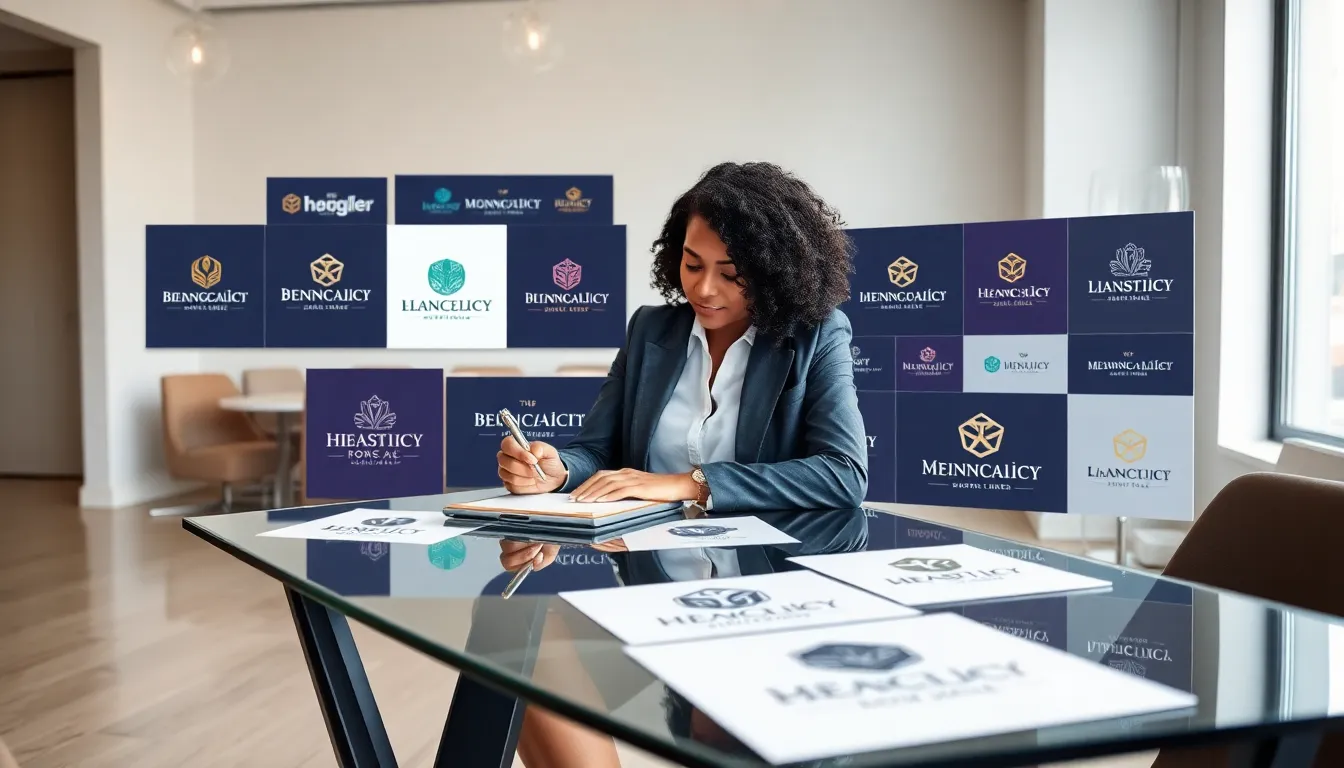When diving into the world of interior design, one thing stands out: a logo isn’t just an image: it’s a steadfast representation of your brand’s personality. Think of it as the bow tie on a tailored suit or the cherry on top of a meticulously crafted cake. If you want potential clients to take your design firm seriously, you’ve got to impress them right from the get-go with a compelling logo. Let’s explore various interior design logo ideas that can set you apart from the crowd. Get ready to unlock your brand’s potential while having some fun along the way.
Table of Contents
ToggleUnderstanding the Importance of a Strong Logo

A well-designed logo is the cornerstone of any successful branding strategy. It’s the first visual cue potential clients get, and it can make or break their first impression. Logos provide a sense of identity and professionalism, communicating a brand’s values at a glance. They encapsulate the essence of what a business stands for, serving as a touchpoint for customer recognition. In a highly competitive market like interior design, standing apart is essential. A memorable logo can help establish trust and credibility, ensuring clients remember not just your name but how to pick out your work from a gallery of options. Not to mention, it adds a touch of flair, because who doesn’t want to look good while doing good?
In essence, investing time and effort into creating a strong logo is not just an aesthetic choice: it’s a critical business decision.
Elements of Effective Interior Design Logos
When crafting an effective logo, several key elements should come into play. First off, simplicity is paramount. A clean, simple design can make a more significant impact than an overly complex one. Think of iconic logos like Apple or Nike: their simplicity allows for easy recognition.
Another element is relevance. The logo should resonate with the interior design industry. This can be achieved using tools like visuals of design tools, shapes representing spaces, or even color palettes that reflect interior aesthetics.
Color plays another critical role, as different shades trigger various emotions. A calming blue may evoke tranquility, whereas bright orange can spark enthusiasm. Choosing the right colors is crucial for conveying your brand’s message.
Finally, versatility should not be overlooked. Your logo will appear across various media, from business cards to online platforms, so it must look good everywhere, in color as well as monochrome.
Creative Logo Ideas for Interior Design Businesses
Now, let’s get the creative juices flowing. Here are some stimulating logo ideas for interior design businesses:
- Geometric Shapes: Use geometric shapes to convey a modern and clean aesthetic. They can represent rooms, furniture, or even buildings, capturing the essence of spatial design.
- Nature-Inspired: Incorporating elements from nature, such as leaves or mountains, can convey a connection with sustainable or organic design practices.
- Monogram Logos: If your business has a unique name, consider designing a sophisticated monogram. It can make your brand appear luxurious and stylish, perfect for high-end interior design.
- Silhouettes of Furniture: Creating a logo that incorporates silhouettes of iconic furniture pieces can cleverly hint at your design expertise.
- Artistic Brush Strokes: Use artistic brush strokes in vibrant colors to resemble creativity and give a more personal touch to your branding.
- Abstract Designs: Abstract logos can be eye-catching and invite curiosity. They allow for flexibility in interpretation, which can resonate with a diverse clientele.
These ideas can serve as jumping-off points, sparking inspiration for logos that uniquely represent your brand.
Incorporating Color Psychology in Logo Design
Color psychology is a fascinating field that can significantly influence consumer perception. The colors you choose for your interior design logo can elicit emotions and shape how clients view your brand. For instance:
- Blue often represents trust and professionalism, making it an appealing choice for those looking to convey dependability.
- Green, as noted, can symbolize tranquility and a connection to nature, aligning well with eco-friendly designers.
- Red brings energy and passion, suitable for firms that thrive on bold designs.
- Black exudes luxury and sophistication, perfect for high-end brands.
Using these colors strategically, you can communicate your design philosophy even before potential clients see your portfolio.
Choosing the Right Fonts for Your Logo
Font selection can fundamentally alter the perception of a logo. Different fonts can communicate different emotions and energies:
- Serif Fonts: Associated with tradition and reliability, serif fonts like Times New Roman or Georgia can indicate professionalism, making them suitable for classic interior design firms.
- Sans-Serif Fonts: Clean and modern, sans-serif fonts like Arial or Helvetica are often seen as contemporary, perfect for minimalist brands.
- Script Fonts: These offer a personal touch while embodying elegance and creativity, but they must be legible at various sizes to be effective.
When choosing a font, it’s essential to remember your target audience and the message you want to convey. A quirky font that may appeal to one demographic could alienate another.
Steps to Create Your Interior Design Logo
Creating your interior design logo doesn’t have to be overwhelming. Here’s a step-by-step process to guide you:
- Define Your Brand: Before diving in, have a clear understanding of your brand’s identity. What are your values? Who is your target audience?
- Research Competitors: Understand what works and what doesn’t in your niche. Analyze competitor logos for inspiration (and what to avoid).
- Sketch Ideas: Start brainstorming ideas through sketches. Don’t worry about perfection: focus on expressing your vision.
- Choose Colors and Fonts: Based on your brand’s personality, select color schemes and fonts that resonate with you and your audience.
- Design the Logo: Whether you use design software or hire a professional, start translating your sketches into a digital format.
- Gather Feedback: Before finalizing, get feedback from colleagues or potential clients. It can reveal insights you hadn’t considered.
- Finalize and Carry out: After revisions and editing, finalize your design and start incorporating it across all your branding materials.





